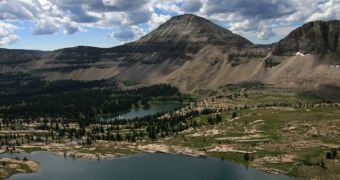A team of geologists conducting research in Russia uncovered even more parts of an ancient Ice Age lake.
Over 10.000 years ago, enormous glacial lakes covered portions of North America and Russia. One of them, called Lake Agassiz, existed over present Minnesota and Canada. Greater than California, back then it was the biggest freshwater lake. Upon draining, it's possible that it altered the surrounding climate, perhaps raising sea levels and influencing ocean circulation as it formed the current Hudson Bay. This great impact on climate and environment is the major reason why discovery of such lakes is important.
In 2007, a similar "fossil lake" has been found by the geologists near the Russian village UstNem. Recently it has been noticed to be even greater than previously believed, reaching a size of 435 to 497 miles (700 to 800 km). It extends west, towards a village named Kotlas, a few dozen km from the Ural Mountains. Compared to this, Lake Superior (the biggest of the Great Lakes) has a top length of 350 miles (560 km).
The samples collected by the specialists are supposed to provide clues on the formation and nature of the similar regional lakes of the time. A geologist at the Geological Survey of Norway, Eiliv Larsen, stated, "We're trying to find out just what these lakes have looked like. Where did the sediments come from and how did the lakes influence the environment and the climate in the region?"
Referring to the fact that the lake appears to have been surrounded and contained by ice, he explains, "We're finding traces of the snout of a glacier that calved into the lake from the north. This probably took place around 20,000 years ago and this was the youngest lake in the region." But researchers discovered evidence of even older glacial lakes. According to Larsen, "Lakes have probably been situated here in two periods during the last Ice Age. We've found river delta deposits which suggest that the oldest lake formed some 65,000 years ago."
The surrounding land still remains to be studied and compared to similar cases. Lake Agassiz is known to have left behind smaller ponds and land which is still recovering after the lost water weight.

 14 DAY TRIAL //
14 DAY TRIAL //